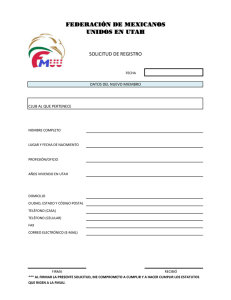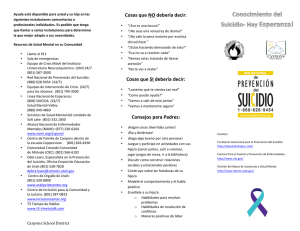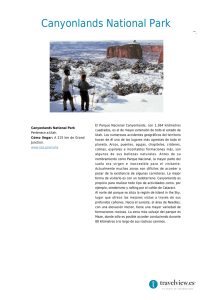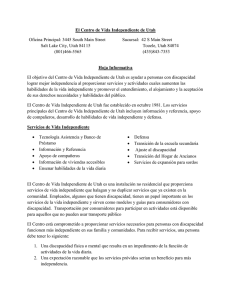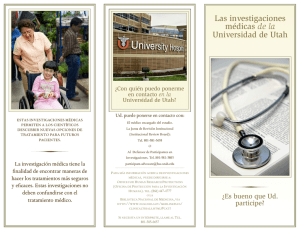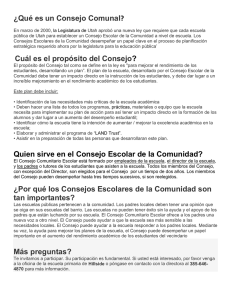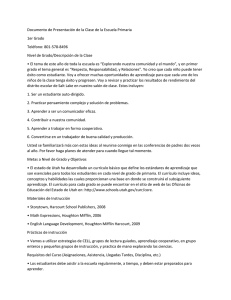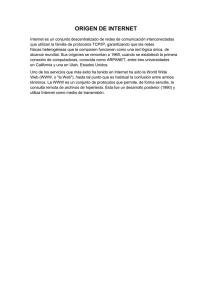Handy Family Tree - Genetics
Anuncio
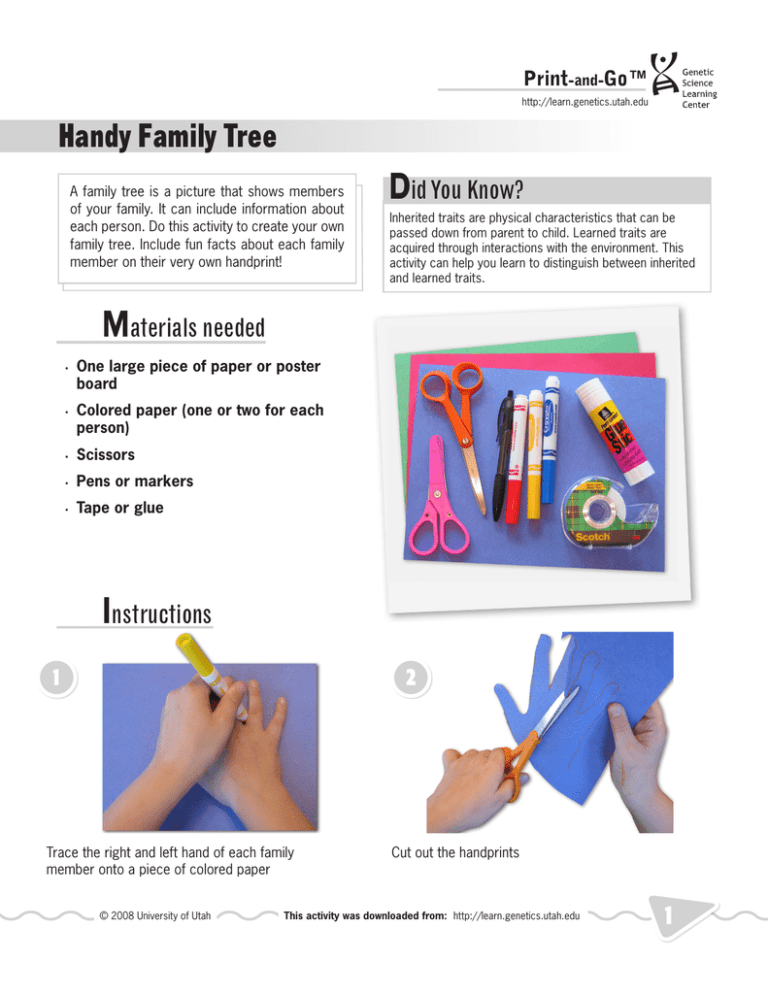
Print-and-Go™ http://learn.genetics.utah.edu Handy Family Tree A family tree is a picture that shows members of your family. It can include information about each person. Do this activity to create your own family tree. Include fun facts about each family member on their very own handprint! Did You Know? Inherited traits are physical characteristics that can be passed down from parent to child. Learned traits are acquired through interactions with the environment. This activity can help you learn to distinguish between inherited and learned traits. Materials needed • One large piece of paper or poster board • Colored paper (one or two for each person) • Scissors • Pens or markers • Tape or glue Instructions 1 2 Trace the right and left hand of each family member onto a piece of colored paper © 2008 University of Utah Cut out the handprints This activity was downloaded from: http://learn.genetics.utah.edu 1 Print-and-Go™ http://learn.genetics.utah.edu 3 Trait no on e els e in yo amily has ur f Word describing Trait shared with a brother or sister charac r u o y ter Favorite game, sport or hobby parent with a d e r a h Trait s dparent ith a gran w d are h s t Trai On each finger of your left handprint list a trait (physical characteristic) that you have inherited such as: • eye color Favorite Favorit e sch ool sub jec food t On each finger of your right handprint, list a trait that you have acquired or learned. See suggestions above. • hair color • dimples • freckles • chin shape (smooth or cleft) • ability to roll the tongue • earlobe attachment (attached or free) • hairline shape on the forehead (smooth or pointed) 4 Draw a tree trunk onto a large piece of paper or poster board. 5 Glue or tape your family’s handprints above the trunk to form a tree. Place the oldest person’s pair of hands at the bottom. Work upward until you place the youngest person’s pair of hands at the top. Optional • Add a small picture of each family member to the palm of one handprint. Write their name, date of birth, and place of birth on the palm of the other handprint. • Include handprint shapes for family members who were not available to draw their hands. See how your parents’ or grandparents’ favorites compare to yours! © 2008 University of Utah This project is supported by grant U33MC00157 from the Health Resources and Services Administration, Maternal and Child Health Bureau, Genetic Services Branch and the March of Dimes. To learn about our permissions policy, visit http://learn.genetics.utah.edu/ permissions/ This activity was downloaded from: http://learn.genetics.utah.edu 2 Print-and-Go™ http://learn.genetics.utah.edu El Árbol Familiar, Hecho a Mano Un árbol familiar es un dibujo que muestra a los miembros de su familia. Puede incluir la información de cada persona. ¡Haga esta actividad para crear su propio árbol familiar! ¿Usted sabía? Los rasgos hereditarios son características físicas que los padres pueden pasar a sus hijos. Los rasgos aprendidos se adquire a través de los interacciónes con el ambiente. Esta actividad puede ayudarle a distinguir entre rasgos heredados y aprendidos. Materiales necesarios • Una hoja grande de papel o cartulina • Papel de color (Un papel para cada miembro de tu familia) • Tijeras • Bolígrafos o marcadores • Cita o pegamento Instrucciones 1 2 Haga un trazo alrededor de la mano derecha e izquierda en cada miembro de su familia sobre una hoja de papel de color. © 2008 University of Utah Recorte siguiendo el trazo de las manos. This activity was downloaded from: http://learn.genetics.utah.edu 3 Print-and-Go™ http://learn.genetics.utah.edu 3 Un rasgo q otro m ue no iembr tiene ningún o de su familia sgo comparti Unherarmano o he do con un rmana rtido con a p m o asgo c us padres Un ralguno de s on partaidbouecla m o c lo o sgo abue a r Unalgún a riba su c c s e d Una palabra que rácter eporte, o pasatiempo favorito d , o g e u j Un La En cada dedo de la mano izquierda liste un rastro que haya heredado (característica física) como: Una comid a favo ma sco ta f avo rita rita En cada dedo de la mano derecha, liste un rasgo que haya adquirido o aprendido. • El color de los ojos • El color del pelo • Los hoyuelos • Las pecas • La forma de la barbilla (Lisa o con hendidura) • La capacidad de enrollar la lengua • La fijación de lóbulo de oreja (unido o libre) • La forma de la línea del cabello en la frente (Lisa o en punta) • La altura 4 Dibuje el tronco de un árbol en una hoja de papel grande o en una cartulina. 5 Pegue sobre el tronco las manos recortadas de su familia para formar un árbol. Ponga abajo las manos recortadas de las personas mayores. Trabaje en forma ascendente hasta que las manos recortadas de la persona más joven esté en la punta del árbol. Opcional • Peque una fotografía pequeña de cada miembro de su familia a la palma de una de las manos recortadas. Escriba sus nombres, fechas de nacimiento y los lugares de nacimiento en la palma de la otra mano. • Incluya las manos recortadas de miembros de la familia que estuvieron ausentes o ya fallecieron. ¡Vea como son o fueron las preferencias de sus padres o abuelos y compárelas con las suyas! © 2008 University of Utah Este proyecto es soportado por grant U33MC00157 de the Health Resources and Services Administration, Maternal and Child Health Bureau, Genetic Services Branch y the March of Dimes. Para aprender sobre nuestra política de los permisos, visite a http://learn. genetics.utah.edu/permissions/ This activity was downloaded from: http://learn.genetics.utah.edu 4
